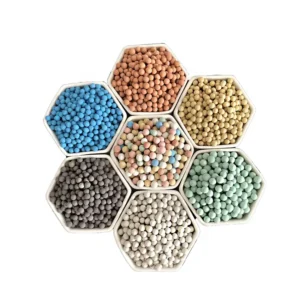In the world of landscape and garden design, decorative fountains add a touch of elegance and charm. One question that often arises is whether clay balls are a safe choice for use in these fountains.
Clay balls, which are typically made from natural clay materials, have certain properties that could potentially make them suitable for such applications. They are porous, which allows for water to flow through them easily. This can help in maintaining the water circulation within the fountain, preventing the formation of stagnant areas where algae and bacteria might thrive. In some public gardens, clay balls have been used in fountains to enhance the aesthetic appeal while also serving a functional purpose.
However, there are several factors to consider regarding their safety. Firstly, the quality of the clay balls is crucial. If they are not properly processed or contain impurities, they could potentially leach harmful substances into the water. For example, some low-quality clay balls might have traces of heavy metals or other contaminants that could pose a risk to the aquatic life in the fountain, such as fish or plants. It is essential to source clay balls from reliable manufacturers who adhere to strict quality control standards.

Another aspect is the durability of the clay balls in the water environment. Over time, they may break down or erode, which could affect the performance of the fountain and potentially clog the water circulation system. In a case study of a large decorative fountain in a city park, it was found that after a few years of using a particular type of clay balls, the fountain’s pumps had to be frequently cleaned due to the accumulation of small clay particles.
Maintenance also plays a significant role in ensuring the safety of using clay balls in fountains. Regular cleaning of the clay balls and the fountain itself is necessary to remove any debris or biological growth that might accumulate on them. Additionally, monitoring the water quality regularly can help detect any potential issues early on. In some instances, if the clay balls are not cleaned properly, they can become a breeding ground for harmful bacteria, which could then be spread through the water droplets in the fountain spray.
In conclusion, while clay balls can offer certain benefits in decorative fountains such as improved water circulation and aesthetics, their safety depends on multiple factors including quality, durability, and proper maintenance. By carefully considering these aspects and taking appropriate measures, it is possible to use clay balls safely in decorative fountains.

